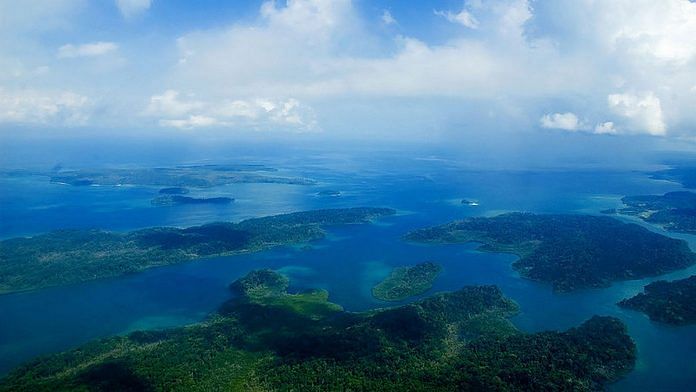The end of the Second World War saw a number of Great Power initiatives to determine the future world order. Apart from the well-known institutions that arose from the Bretton Woods meetings, Western strategists also crafted a hierarchy of national strategies that became common parlance in the world’s capitals.
The foremost of these was a ‘Grand Strategy’ that involved a ‘whole of government’ approach to strategic competition. The first such Grand Strategy, written in 1947, ostensibly to deal with the threat of communist domination of the world, proved its efficacy with the collapse of the former USSR in 1991.
The rise of China as an economic, technological, engineering, space, and military power is being analysed worldwide to ascertain what Beijing’s Grand Strategy is. However, China, not present at Bretton Woods, has not adopted the same terminology for its strategic planning. All the same, there is not one capital in the world that does not believe that China has also adopted a ‘whole of government’ approach to dealing with the rest of the world — call it what you may. While China did not have the heft to think in terms of a Grand strategy before 2010, the arrival of Xi Jinping as the President of the People’s Republic of China in 2013 saw the articulation of a perceived Grand Strategy. This was evident in his 2012 “Chinese dream” speech at the National Museum of China, where Beijing’s goals were outlined — a well–governed, socially stable, economically prosperous, technologically advanced, and militarily powerful state.
China’s westward drive
India will probably witness economic rejuvenation by 2050, similar to the reforms brought in Beijing in the late 1970s, and analysts the world over are talking of New Delhi’s great power ambitions. Somewhat similar to the Chinese dream is Prime Minister Narendra Modi’s Viksit Bharat, which comes pretty close to a ‘whole of government’ approach.
However, some differences are significant. Unlike the military component of the Chinese dream, read along with yearly white papers and party plenum minutes, New Delhi has not yet articulated a long-term military component of Viksit Bharat. This, therefore, necessitates that we look at China’s Grand Strategy before articulating ours. Some conclusions from the study of the Chinese strategy’s military component are inevitable. Beijing does not, it appears, seek global hegemony. But it does seek, firstly, to challenge US global hegemony and secondly, hegemony in Asia — an objective totally unacceptable to India. China hopes to make up for the $10 trillion GDP gap with the US through technological and engineering dominance in the developing world and Africa.
Supporting this ambition is China’s military maritime strategy. It has launched a huge westward drive through the Indian Ocean, further across the Atlantic Ocean up to South America through Africa, and Panama (Trump is right on this one). China already controls the operation of 129 ports in 65 countries, laying the foundation of a drive to dominate the littorals of many countries, beginning with Pakistan — its chosen South Asian ally. With such a littoral domination strategy, it hopes to replicate itself in the world’s oceans, which it thinks it has achieved in the west Pacific. It is an area denial strategy of China against the worldwide command structure that the US has in place. This determination of Beijing puts New Delhi in great danger, while also creating great opportunities. At no stage is this writer contemplating hostilities with China nor does he subscribe to the fears sometimes expressed in New Delhi of a two–front war.
Also read: India’s maritime vision is not just maturing—it’s gearing up to lead the Indo-Pacific arena
A two-track strategy
The challenge for India is to survive, if not win, the competition, and compel an order in Asia different from the one currently envisaged in Beijing. The current difference in China’s and India’s GDPs of about $15 trillion may reduce by 2050, but it wouldn’t be enough to remove the strategic asymmetry between the two countries which may be a permanent feature. In this scenario, how can the Indian military craft a joint strategy that creates anxieties in Beijing and reduces the options seen to be available to China to dominate Asia?
The Indian army can undoubtedly defend our northern border but our poor Himalayan geography precludes an offensive land strategy. On the other hand, how can we leverage China’s extremely poor maritime geography? 60 per cent of the 1,72,000 Chinese merchant vessels transit the Malacca Strait, through which also passes 80 per cent of China’s energy imports.
What will help counter Beijing’s long-term aggression against India is a two-track maritime grand strategy. The first track would be building three 80,000-tonne aircraft carriers to dominate both the Indian Ocean littoral as well as the 6,400 mile-wide ocean space.
Secondly, the Malacca Strait can be dominated by converting the Great Nicobar Island into an Indian Pearl Harbor. This will achieve the three fold objective — providing an airfield for naval reconnaissance aircraft to enforce 24X7 info-dominance, reinforcing satellite surveillance to achieve battlespace domination between the surface of the Malacca Strait and the troposphere, and providing an Indian submarine base to push an underwater threat into the contested South China Sea.
India does not need a war, but a permanent threat to the largest exporting nation in the world and its aggressively articulated westward geo-economic expansion strategy implicit in its Grand Strategy. Once this plan is executed, Indian diplomats will be given the red carpet in Beijing.
Rear Admiral Raja Menon, a gold medallist from the NDA, retired as the Assistant Chief of the Naval Staff (Operations). He is the author of ‘Maritime Strategy and Continental Wars’ and ‘A Nuclear Strategy for India’. Views are personal.
(Edited by Aamaan Alam Khan)






